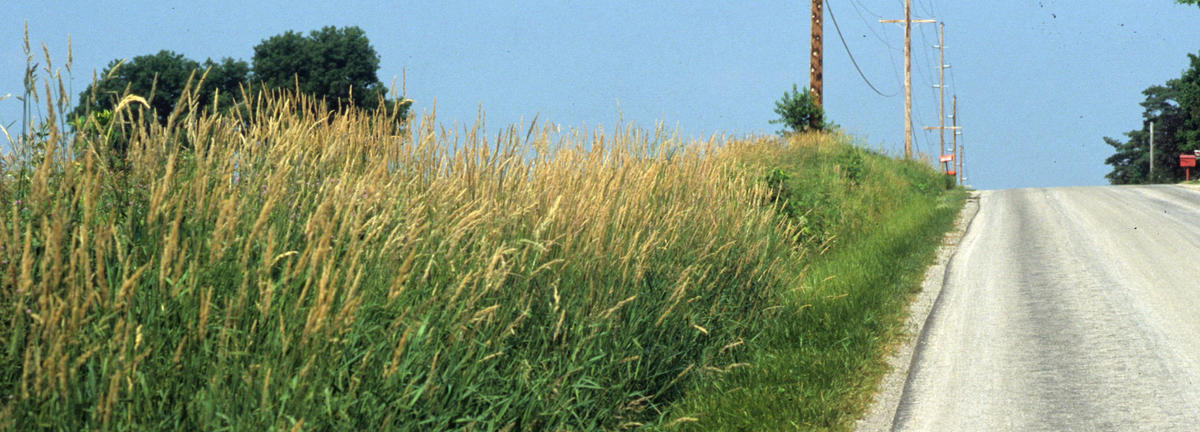
Reed canarygrass stand along a roadside
Image credit: "Reed canarygrass" by Mark Frey, The Presidio Trust, Bugwood.org is licensed under CC BY-NC 3.0
Background
Reed canarygrass (Phalaris arundinacea) is a plant with a complex local history. It poses a major threat to wetland diversity in the state, and for that reason many land managers choose to undergo the expensive and difficult process of removing large stands. But it is still sometimes planted for revegetation programs, and varieties of the grass have been cultivated as a forage crop for the past century. Reed canarygrass may also have been used by early Native Americans for traditional weaving, making them culturally important.
This project sought to establish a reliable genetic basis for differentiating between native and non-native varieties of reed canarygrass.
Research questions
- Where are Minnesota reed canarygrass populations native or exotic?
- Could the native vs. exotic status of reed canarygrass be tested by land managers in the field?
Outcomes
Plant DNA was extracted from samples of reed canarygrass across the state. Researchers used genetic techniques and found that most reed canarygrass in Minnesota is native to the state and not from Europe. The genetics are quite complex and a device or tool to use in the field to identify native vs. exotic was not developed at this time. However, due to this discovery, Tribal and State managers may choose to manage or preserve this species differently. The investment by the state on control measures for this invasive grass warrants careful consideration of best management approaches to maintaining the native genetic diversity yet not encouraging the invasive spread of this grass into managed areas.
Publications
- Progress on Mechanisms and Impacts of Wetland Plant Invasions: A Twenty-Year Retrospective Analysis and Priorities for the Next Twenty (Critical Reviews in Plant Sciences, 2023)
- Management and Control Issues for Native, Invasive Species (Reed Canarygrass): Evaluating Philosophical, Management, and Legislative Issues (American Society for Horticultural Science, 2021)
- Riparian populations of Minnesota reed canarygrass (Phalaris arundinacea) are most likely native, based on SNPs (DArTseqLD) (Wetlands Ecology and Management, 2021)
- Challenges of Establishing Native versus Exotic Status of Herbarium Specimens (HortTechnology, 2019)
- Throwing Out the Bathwater but Keeping the Baby: Lessons Learned from Purple Loosestrife and Reed Canarygrass (American Society for Horticultural Science, 2019)
Outreach
- North American Invasive Species Management Association (NAISMA) webinar series, 2023: “The Dilemma for Control of Invasive Species: Incorrect Terms Limit Our Capacity to Respond”
- Upper Midwest Invasive Species Conference, 2020
- Society of Wetland Scientists Conference, Special Invasive Species Symposium, 2019
- Plant Animal Genome Conference, 2019
- American Society of Plant Biologists Conference, 2019
- American Society for Horticultural Science Conference, 2018
- Plant and Animal Genome Conference, 2018
- Upper Midwest Invasive Species Conference, 2018
- Floriculture Research Alliance annual meeting, 2018
- American Society of Plant Biology annual meeting, 2018